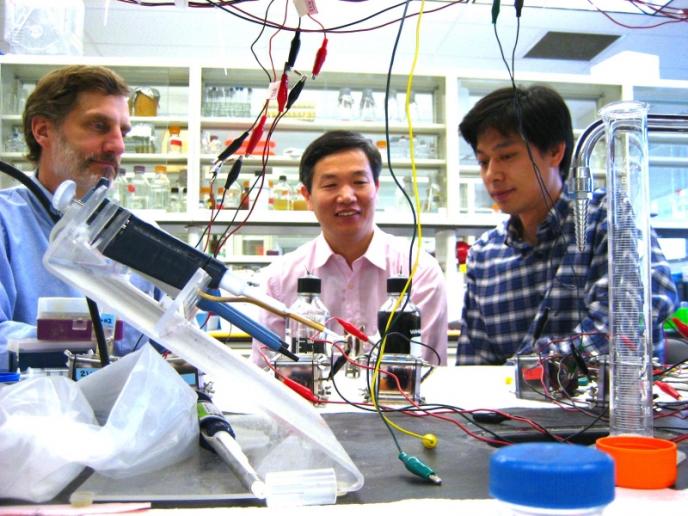According to engineers from Penn State University, a tiny bacterium is able to use an electric current and directly convert carbon dioxide and water into methane for a portable energy source.

Engineers at Penn State University claim that a tiny bacterium is able to use an electric current and directly convert carbon dioxide and water into methane for a portable energy source.
"We looked at the production of hydrogen in bacterial electrolytic cells and we got more and more methane," said Bruce E. Logan, a professor of environmental engineering at Penn State University. "We may now understand why."
Methanogenic microorganisms do do this in swamps and landfills, but scientists have until now thought that they do this by converting hydrogen or organic substances (such as acetate) into methane. However, the researchers found that while trying to produce hydrogen in bacterial electrolytic cells, their cells produced hydrogen in quantities above the expected rate.
"The researchers' view of methane production in nature, which we thought was occurring through hydrogen, may not be completely correct," said the lead researcher. "In fact, we found only a little hydrogen in the gaseous phase in nature. It is possible that the place we thought of as the source of the hydrogen is not so correct."
Bacterial electrolytic cells do require an initial electrical voltage, which is added to that which the bacterium produces by itself using organic materials and which is converted at the end of the process into hydrogen.
The researchers discovered that ancient bacteria (or Archaea), using the same amount of electricity, are able to convert carbon dioxide and water into methane without the need for the addition of organic matter, bacteria or hydrogen - the components found in typical bacterial electrolytic cells.
"We have a bacterium that sustains itself and is able to absorb electrons directly and use them to create methane," explains the lead researcher.
The team of researchers verified that indeed the bacteria produce the methane. They prepared a two-compartment electrolytic cell in which there is an anode immersed in water in one section and a cathode immersed in water, inorganic nutrients and carbon dioxide in the other section. They applied an electric voltage but received only a weak current. In the next step the researchers coated the cathode with a bio-envelope of ancient bacteria and not only did current flow through the cell but it also produced methane.
"The only way to create a current at the voltage we used was only if these bacteria directly received electrons into them," explains the researcher. He notes that the electrochemical reaction occurs without the presence of an expensive metallic catalyst of one kind or another, and at much lower energy levels than those required in non-biological methane production methods.
The cells are eighty percent efficient in converting electricity to methane and since they use carbon dioxide as their raw material, the consumption of carbon-based materials is avoided when the electricity comes from renewable energy sources such as solar energy or wind energy. "The process does not remove carbon, but it does convert carbon dioxide into fuel," explains the researcher. "If during the burning of the methane you capture the carbon dioxide that is released during it, because then the entire process does not consume carbon at all."
The researcher proposes the process as an efficient and economical method for producing portable fuel from completely renewable energy sources. Methane is better than hydrogen as a fuel since significant parts of the infrastructure in the US are already suitable for the transportation and supply of methane.
The research findings were published in the scientific journal Environmental Science and Technology.
The news from the university
http://live.psu.edu/story/38671

3 תגובות
to 2. Not sure. To produce methane, the bacteria had to produce
Finance at the beginning of the process. In any case, "by and large" the principle is clear: the product
The final is methane.
Apparently, a mistake was made in the fourth paragraph that was worded "Methanogenic microorganisms do do this in swamps and landfills, but scientists have until now thought that they do this by converting hydrogen or organic substances (such as acetate) into methane." However, the researchers found that while trying to produce hydrogen in bacterial electrolytic cells, their cells produced hydrogen in quantities above the expected rate."
Methane should have been written in the last line and not hydrogen.
I have a problem with such news. It's nice but very, very far from practical application. For some reason the field of energy attracts esoteric studies and publications.